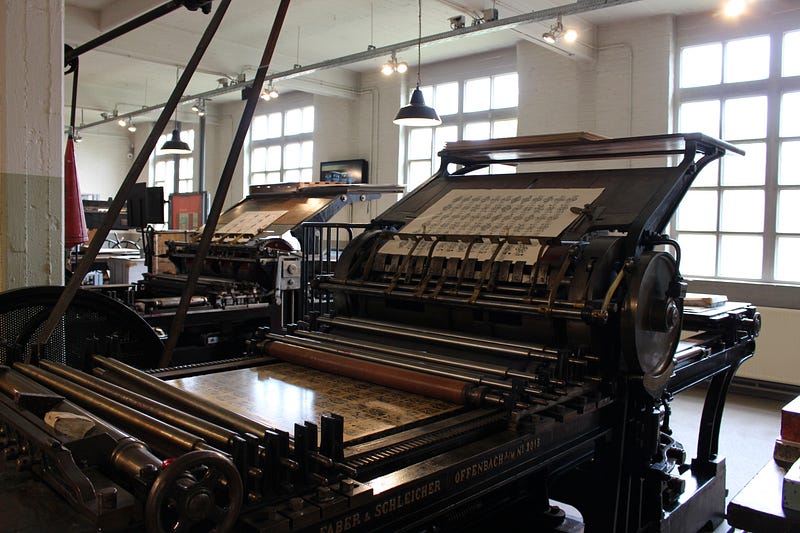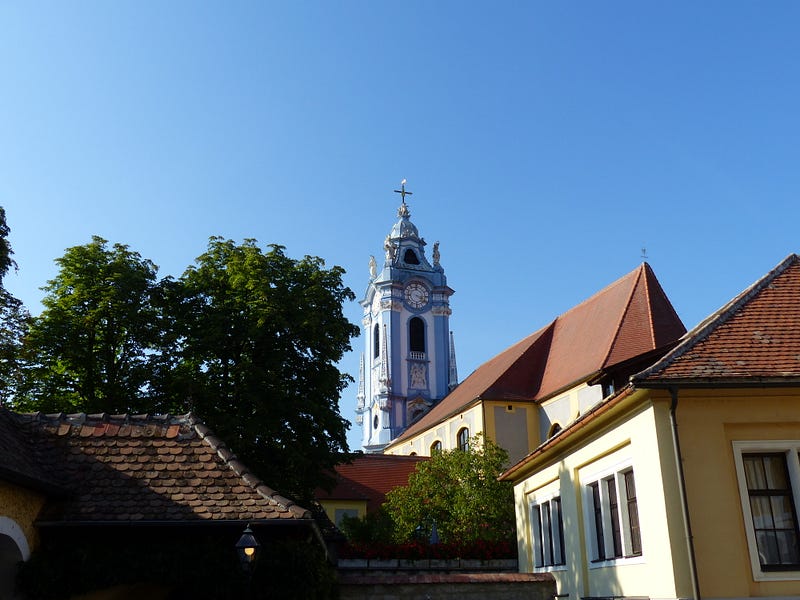A Discussion of Bourgeois Equality Chapter 41 “Printing and Reading and Fragmentation Sustained the Dignity of Commoners”
Dr. McCloskey is exploring the various factors that contributed to a culture supportive of the Great Enrichment, and now she turns her attention to the increase in the sharing of ideas that the printing press made possible.
Since the Great Enrichment kicked off in England, she is exploring the changing factors in the Western world that will contribute to that event.
But she does start this chapter acknowledging that printing was invented in China, long before Johannes Gutenberg in the 1400s.
True, most inventions that we once confidently claimed for Europe, such as stirrups, the mold-board plow, the blast furnace, have long been shown to be Chinese. But in one technology relevant to printing, optics, Europeans really did have an edge on other civilizations, as the later excellence in telescopes and microscopes showed again. (p. 388)
The relevance of optics? She is talking about eyeglasses. With eyeglasses, people can read for many more years even after the middle-age loss of close vision sets in.
Further, optics extended the career life of the detail craftsman, which helped the Great Enrichment in areas beyond printing.
But how did printing make a difference to the Great Enrichment?
You may already be familiar with how printing dispersed the ideas of Martin Luther which spurred the Protestant Reformation. Such an outcome would not have been possible if the ideas could not have spread far and wide.
Irony alert: the first profitable texts in Europe were religious, but it was forms for people to fill out how much they were going to pay for indulgences. These payments for sins and for getting people out of Purgatory quicker were actually being used by the Church to finance building projects like the Basilica of St Peter’s in Rome and Michelangelo’s paintings in the Sistine Chapel. (p. 389)
These were some of the practices that goaded Luther into action. The printing press was revolutionary, toppling institutions and threatening governments. So why was it allowed?
McCloskey uses phrases like “a slightly free press” and “adequately free” to indicate that clearly revolutionary ideas could be spread but only because institutions could not muster up complete censorship.
Efforts were certainly sporadically made but they did not last long or have much success in the politically fragmented Europe.
Something could be banned by the Vatican or by a particular country, but another country not bound by their standards would print it anyway. Then it could be smuggled everywhere.
By 1600 the Dutch had taken over from the Venetians the role of unrestricted publishers of Europe, publishing books of heretics like Baruch Spinoza in Latin, John Locke in English, and Pierre Bayle in French…(p. 391)
McCloskey uses the concept of weak ties and strong ties to further understand this. The connections in society from the spread of printed books and letters creates weak ties of people sharing in ideas and the Conversation. Strong ties would be the nations, the aristocracy, the church — institutions that set the rules of society.
McCloskey offers two examples of the loss of strong ties that cause failure. “If you remove one connecting gear in a watch it immediately stops. If you stab someone in the heart she immediately dies.” (p. 394)
She says you would think the loss of strong ties would lead to a collapse of society but instead, weak ties keep things going. She cites a study that created a simulation using 4.6 million cell-phone users in Finland over a few months. They found that the removal of strong ties shrunk the network but did not collapse it. In contrast, removal of 60% of weak ties did collapse the network. (p. 394)
Thus in society, weak ties matter more than strong ties.
Our society is a trading society, and McCloskey notes “numerous weak ties are characteristic of trading societies…” (p. 394)
The printing press increased the weak ties in number and distance and strength. The strong ties of the state could not enforce censorship to stop them.
As an aside, the USSR is one example of the state using weak ties to enforce its repressive laws. By encouraging neighbors to turn in neighbors, the weak ties were destroyed. The state could rely on the resulting fear and paranoia that created to prevent weak ties from subverting the state’s power.
This shows the importance of a free press to feed the weak ties of society as well as the need for a healthy civil society to keep them alive. Letting a state destroy them can lead to tyrannical government.
Conclusion
Tying this to the Great Enrichment, McCloskey notes that the stereotypical depiction of a merchant in early modern painting was a figure with ink-stained fingers. Merchants had to be literate to read letters with news that could affect their business, keep the accounts, and stay up to date with prices. (p. 392)
With the rise of the printing press, books, letters, and news were shared far and wide through weak ties, allowing people to discern opportunities for trade and investment. Combined with the rise in self-governance, and a rising belief in happiness in this life, a trading society that welcomed the trade-tested system of betterments was rising in England.
Reference: McCloskey, Deirdre Nansen, 2016. “Printing and Reading and Fragmentation Sustained the Dignity of Commoners,” Chapter 41 of Bourgeois Equality, The University of Chicago Press.




